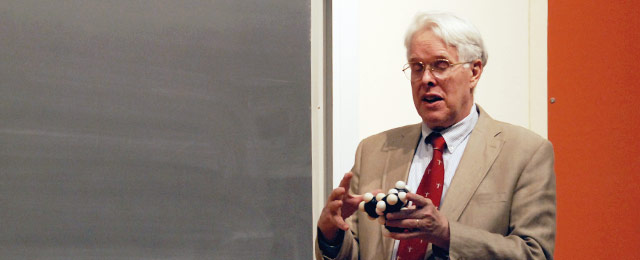Online courses directory (423)
The course includes survey and special topics designed for graduate students in the brain and cognitive sciences. It emphasizes ethological studies of natural behavior patterns and their analysis in laboratory work, with contributions from field biology (mammology, primatology), sociobiology, and comparative psychology. It stresses mammalian behavior but also includes major contributions from studies of other vertebrates and of invertebrates. It covers some applications of animal-behavior knowledge to neuropsychology and behavioral pharmacology.
The course focuses on the problem of supervised learning within the framework of Statistical Learning Theory. It starts with a review of classical statistical techniques, including Regularization Theory in RKHS for multivariate function approximation from sparse data. Next, VC theory is discussed in detail and used to justify classification and regression techniques such as Regularization Networks and Support Vector Machines. Selected topics such as boosting, feature selection and multiclass classification will complete the theory part of the course. During the course we will examine applications of several learning techniques in areas such as computer vision, computer graphics, database search and time-series analysis and prediction. We will briefly discuss implications of learning theories for how the brain may learn from experience, focusing on the neurobiology of object recognition. We plan to emphasize hands-on applications and exercises, paralleling the rapidly increasing practical uses of the techniques described in the subject.
Introduction to cell structure & function, molecular & organism genetics, animal development, form & function.
Matter exists in four states - solid, liquid, gas and plasma and it will change state depending on the temperature and pressure applied to the matter. In this free online chemistry course about states of matter you will learn about the characteristics of each of the four states and the amount of energy that can be added to or taken from a substance before it starts to change state. As all substances change state at different temperatures and pressures you will learn how to use phase change diagrams to plot the energy and pressure levels, the triple point, critical temperature, boiling and melting points associated with different substances. You will also learn in a step by step manner how to calculate the change in energy needed to move a substance along the state of matter spectrum. This free online chemistry course will be of great interest to all students who wish to pursue a career in any of the sciences such as chemistry, physics, biology or geology, or the individual learner who simply wants to learn and understand what is happening when matter changes from solid to liquid to gas.<br />
This is a continuation of Freshman Organic Chemistry I (CHEM 125a), the introductory course on current theories of structure and mechanism in organic chemistry for students with excellent preparation in chemistry and physics. This semester treats simple and complex reaction mechanisms, spectroscopy, organic synthesis, and some molecules of nature.
This series of research talks by members of the Department of Brain and Cognitive Sciences introduces students to different approaches to the study of the brain and mind.
Topics include:
- From Neurons to Neural Networks
- Prefrontal Cortex and the Neural Basis of Cognitive Control
- Hippocampal Memory Formation and the Role of Sleep
- The Formation of Internal Modes for Learning Motor Skills
- Look and See: How the Brain Selects Objects and Directs the Eyes
- How the Brain Wires Itself


















